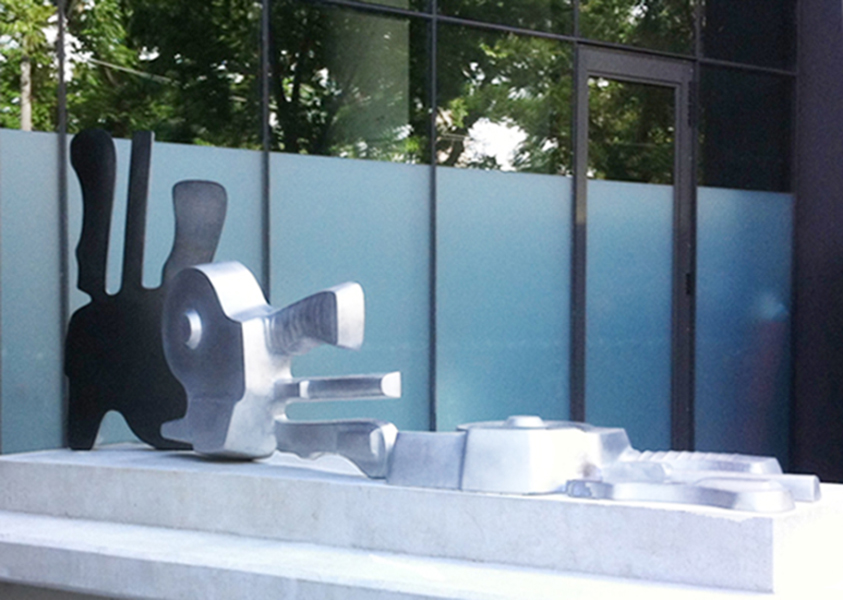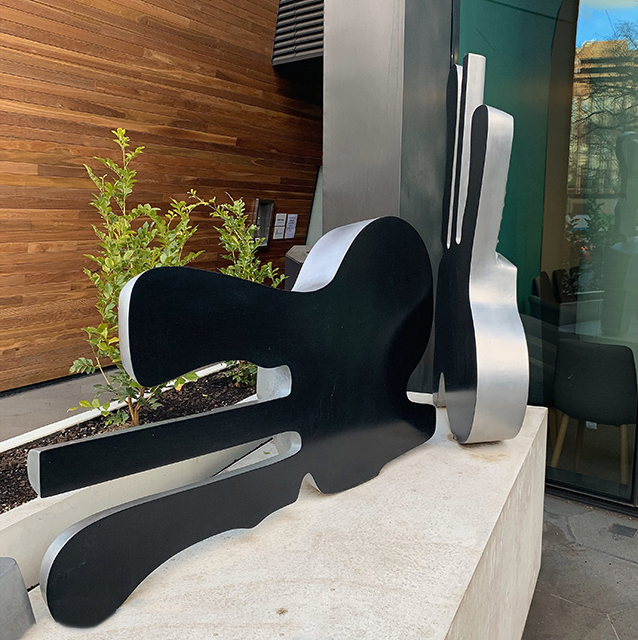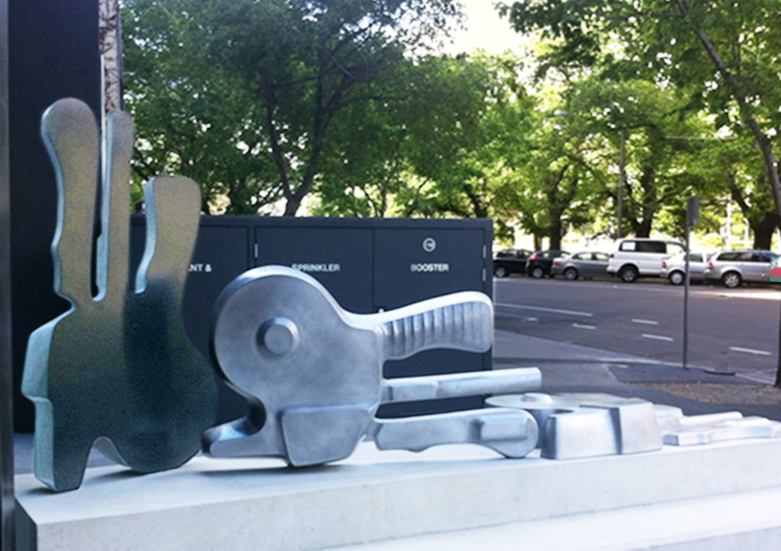The Last Move, Albert Tower, South Melbourne, 2013, aluminium
The Last Move is part of an extended body of work by Melbourne artist Julie Shiels which derives from the shapes of vacuum-formed plastic ‘blister packs.’ It therefore arises initially out of the modernist tradition of the ‘readymade’ or the ‘found object’, where ordinary, quotidian objects are selected or modified or combined in such ways as to grant them the status of works of art.
However, The Last Move is not simply a piece of consumer culture detritus randomly chosen for elevation into the realm of art. The packaging shape on which it is based has been quite deliberately chosen for its specific, functional resonances. It in fact derives from the plastic covering of a stationery supplier’s ‘removal kit’, a handy combination of adhesive tape dispenser, slicing blade and fibre-tipped pen – all you need for packing and labelling cardboard boxes. The work’s title therefore makes direct reference to the lives of the building’s residents, and to their new apartment as final (or perhaps just most recent) destination.
There is, however, still more to the work. The strange three-pronged form is at once intriguing and elusive, like a sign in an unfamiliar alphabet. The profile has clear echoes the famous ‘duck-rabbit problem’ in the psychology of visual perception. In three dimensions, the form has a strange robotic, sci-fi character, like something from the control panel of an alien spaceship. There is even a suggestion of the outline of a key, a useful reminder for residents leaving or entering the building.
More abstractly, the work plays with perception and expectation: initially in the way it makes a void into a solid; then in its uncanny upscaling; and finally in its triple iteration – lying flat on its concrete support and standing up in both horizontal and vertical orientation. Finally, these two upright elevations present distinctly different faces to occupants of the building and to passers-by on the footpath: the silver of the contoured aluminium front and the silhouette of the flat black back.
Changing character as sun and shadow move across its component parts over the course of a day, The Last Move makes something extraordinary out of the ordinary, something marvellous out of moving house.
David Hansen, Associate Professor, The Centre for Art History and Design, ANU.
Cast aluminum, 75 x 92 x 310 cm



